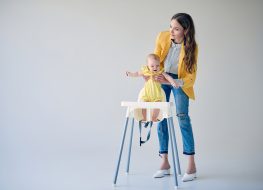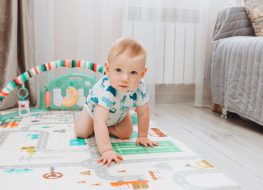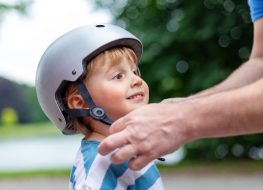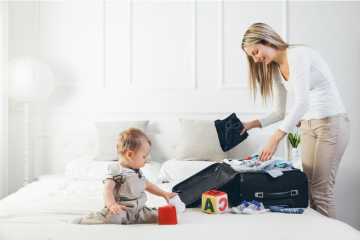
Babies are incredibly precious, but behind their adorable, squishy faces are tons of diapers. Many soon-to-be parents and even long-time parents struggle with diaper duty.
That’s why we’ve put together eight diaper changing pad hacks that every parent needs to know! Find out the genius tips to make your diaper changing experience hassle-free.
A Brief on Diaper Changing Pad and Its Benefits
Diaper changing pads are an essential tool for any parent or caregiver. Not only do these pads provide a convenient surface to change diapers on, but they are also designed to keep the diaper contained and prevent leaks from seeping through onto furniture or flooring.
Parents and guardians who frequently travel find changing pads to be important. A portable diaper changing pad can help ensure that diaper changes go smoothly wherever you may be.
Aside from their practical benefits, diaper changing pads are also very helpful for protecting your baby’s delicate skin and promoting healthy development. These soft pads are made with a gentle, non-irritating fabric perfectly suited for a baby’s sensitive skin. So rest assured, your little one will be comfy and happy during a diaper change.
By ensuring proper diaper care and preventing diaper rash, these pads can give your child a healthy start in life and foster habits that will last well into childhood and beyond. So next time you’re looking for a reliable diaper changing solution, don’t forget to grab your trusty diaper changing pad! You’ll be glad you did.
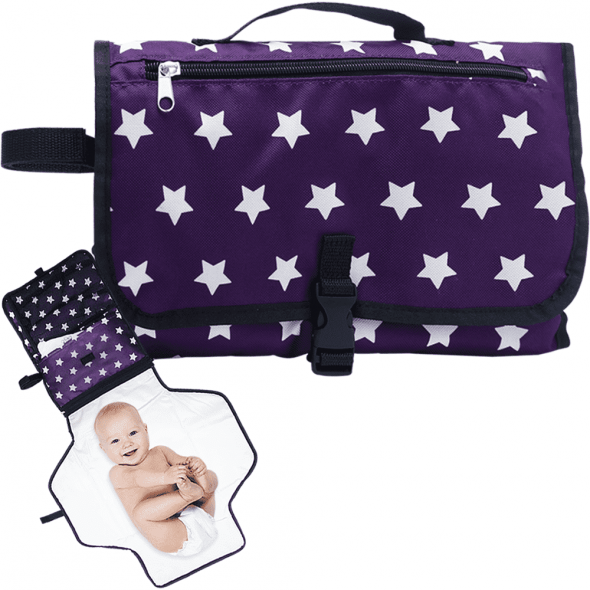
Tips for Changing Newborn Babies’ Diapers
We can consider pooping a milestone for your little one. Your little one’s first poop, also known as meconium, will have a tar-like consistency and is black, so it’s harder to clean from your baby’s cute butt. Don’t be surprised, seeing as this poo is nine months’ worth of nutrients.
Use Olive or Coconut Oil for Baby’s First Poop
Apply some oil on a clean cloth to wipe the sticky mess off your baby. Parents also put a thin layer of petroleum jelly after their baby’s first diaper change to clean off any residue that gets stuck later on.
Protect Your Newborn’s Healing Umbilical Cord
Most baby diapers are high-waisted and go up to the belly button. Don’t put your newborn’s diaper on their umbilical stump. Your baby’s stump will heal from one to three weeks after being born.
Parents should keep the stump clean, dry, and poop-free to avoid infections. Thus, you should fold the newborn diapers down.
Point Your Little One’s Peepee Down
Some say daughters are hard to take care of. They don’t realize that sons are messier to have.
Do you know those movies that exaggerate the baby peeing like a fountain with a straight stream shooting to your face? Of course, it may not be as high or as much as portrayed in the movies, but little boys peeing on you is pretty accurate. So make sure your little guy’s peepee is facing down.
Don’t Buy Peepee Teepees
These teepees are structured clothes to cover your little boy’s nether regions. Instead of wasting your money on some fancy fabric, use any fast-absorbing cloth to protect you from being covered in pee.
Encourage Your Baby to Pee
When it’s cold and damp, you get the tingling feeling that you want to pee. It’s also the same for your baby. So we suggest that you wipe a wet wipe or a damp cloth on your baby’s tummy, triggering them to pee before taking off their diaper.
Our Top 8 Hacks When On-The-Go
Parents have devised plentiful tricks to make their diaper duty less messy and less stinky. But we picked out the fool-proof ones for a fast and, most importantly, successful diaper change.
Choose a Practical Onesie Over Adorable Outfits
Your baby is oh-so-cute in their tiny pajamas that match yours, but you won’t think so when you’ll be attempting to remove their stinky diapers half-asleep in the middle of the night. Having to change their diapers in public with snap button suits isn’t a walk in the park either.
Even if you change for the 4th time in a day, taking off your baby’s onesies will be a breeze. Onesies that come with a snap closure at the crotch area make diaper changing easier and more efficient.
Use Diaper Colour Lines
Parents have this instinct that tells them when their baby is hungry, sleepy, or fuzzy. But knowing when they’ve peed or pooped can be tricky. Quality diapers have pH indicator lines that tell parents when it’s time for a diaper change. When the yellow line turns blue, it’s a sign to get fresh ones.
Use the Old Diaper for the First Wipe
Wet wipes and tissues aren’t cheap, especially if you use three rolls and packs in just one week. So instead of throwing out the soiled diaper, we suggest that you use the clean part to wipe your baby’s poop. This way, you get to save money and Mother Nature.
Go For Waterproof Changing Pads
First-time parents will experience messy baby changing pads, and you can’t avoid having poop or pee stains on your changing table. With waterproof baby changing pads, you can stash away your diaper changing pads in minutes and be on your way. This portable changing pad works best if you’re pressed for time or traveling.
Have Fun During Diaper Time
You don’t have to dread every time you change your little one’s diapers. Diaper time can be a wonderful bonding opportunity for you and your baby. You can talk to your baby, sing a song, and play with them using their favorite plush toy. Doing these fun-filled activities makes your squirming baby less antsy and more focused on you.
Size Up Your Baby’s Diapers
If you think the peeing and pooping gets less and less, it doesn’t, especially when your baby is a heavy wetter or when weaning starts.
Additionally, babies grow way too fast, and your diaper last week may not fit your baby’s bum for the coming weeks. Thus, we highly suggest you go for bigger sizes, so there’s less leakage and more comfort for your little one.
Have an Emergency Diaper Bag Wherever You Go
Rather than having one changing table at home, why not have a carry-on changing station? This way, you don’t have to rush home or go to the nearest restroom just to change your baby’s dirty diapers.
Having a baby changing pad is necessary, but other than this, here are other baby items you’ll need:
- Wipes
- Diapers
- Hand sanitizer
- Diaper rash cream
- Ziploc or plastic bags for your little one’s soiled clothes
- Baby powder
- Extra baby clothes
Invest in a Diaper Bag With Changing Pad
It’s a hassle to carry a diaper bag, a diaper changing basket, and other baby gear. So instead of struggling to bring everything, we recommend that you get a diaper bag that can transform into a changing pad to save you a ton of space.
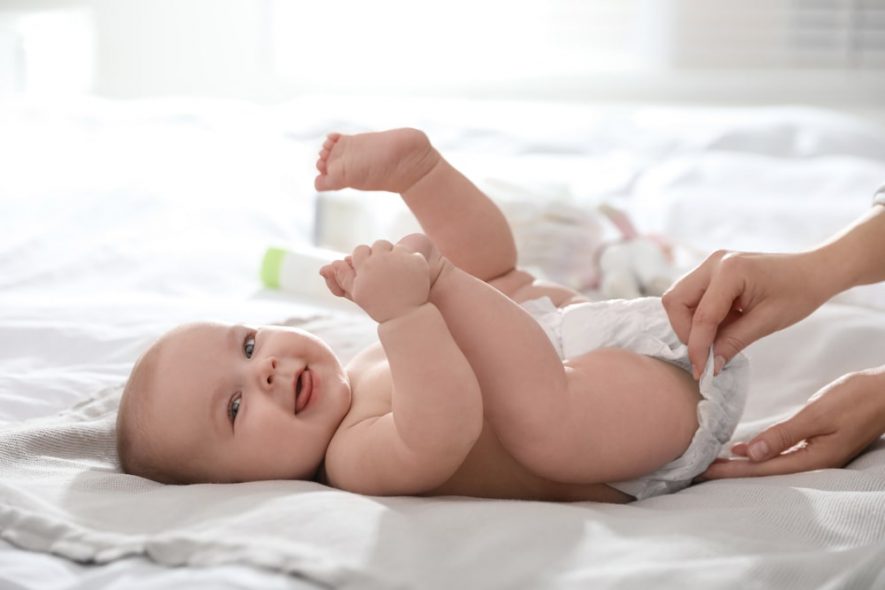
Final Thoughts
Ashtonbee’s portable diaper changing bag is the answer to all of your diaper changing problems. It comes with a changing pad and enough pockets to store everything you need to bring, including space for an extra change of clothes for both you and your baby. No more worrying about where to put your baby’s diapers or what to do when there’s a blowout! This bag has got you covered.
If you’re looking for something that will make diaper time a little less stressful, shop Ashtonbee’s 2-in-1 diaper bag today!

